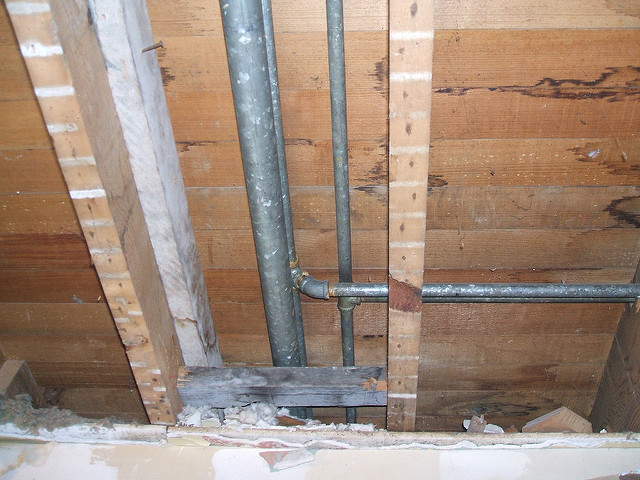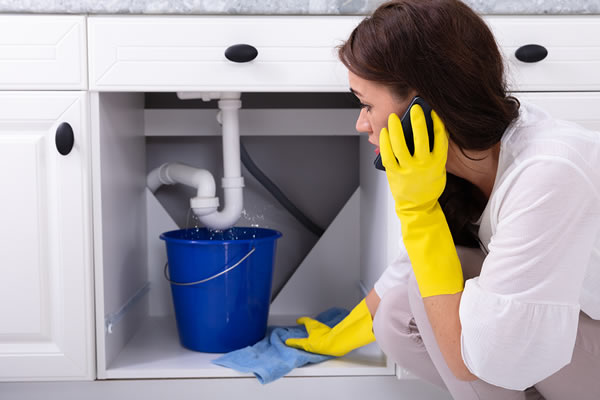6 Ways to Find Surprise Water Leakages in Your House
6 Ways to Find Surprise Water Leakages in Your House
Blog Article
What're your insights and beliefs on Detecting hidden plumbing leaks?

Early detection of dripping water lines can mitigate a prospective calamity. Some tiny water leakages might not be visible.
1. Analyze the Water Meter
Every residence has a water meter. Checking it is a proven way that helps you discover leaks. For beginners, switch off all the water resources. Guarantee no one will certainly flush, use the faucet, shower, run the cleaning machine or dishwashing machine. From there, most likely to the meter as well as watch if it will transform. Since nobody is using it, there need to be no activities. If it moves, that shows a fast-moving leak. Furthermore, if you find no changes, wait an hour or two and examine back once again. This implies you may have a slow-moving leakage that could also be underground.
2. Inspect Water Intake
If you identify unexpected adjustments, regardless of your usage being the exact same, it implies that you have leaks in your plumbing system. An abrupt spike in your expense suggests a fast-moving leak.
A consistent increase every month, even with the very same practices, reveals you have a slow-moving leakage that's likewise slowly rising. Call a plumber to extensively examine your residential property, specifically if you really feel a cozy location on your flooring with piping underneath.
3. Do a Food Coloring Test
When it comes to water consumption, 30% comes from bathrooms. If the shade in some way infiltrates your bowl during that time without flushing, there's a leak in between the container as well as bowl.
4. Asses Outside Lines
Don't forget to examine your outside water lines too. Examination spigots by affixing a garden hose. Needs to water leak out of the link, you have a loosened rubber gasket. Replace this as well as ensure all connections are limited. If you've obtained a lawn sprinkler, it will certainly help get it skillfully examined and preserved each year. One small leak can lose lots of water as well as spike your water bill.
5. Analyze the scenario as well as examine
Property owners need to make it a behavior to inspect under the sink counters and even inside cabinets for any kind of bad odor or mold growth. These 2 warnings suggest a leakage so prompt attention is called for. Doing regular examinations, also bi-annually, can conserve you from a major issue.
Examine for discolorations and also deteriorating as most appliances as well as pipelines have a life span. If you believe dripping water lines in your plumbing system, don't wait for it to intensify.
Early discovery of leaking water lines can alleviate a possible disaster. Some little water leakages might not be visible. Checking it is a surefire means that aids you uncover leaks. One little leak can throw away lots of water as well as increase your water expense.
If you suspect leaking water lines in your plumbing system, don't wait for it to rise.
WARNING SIGNS OF WATER LEAKAGE BEHIND THE WALL
PERSISTENT MUSTY ODORS
As water slowly drips from a leaky pipe inside the wall, flooring and sheetrock stay damp and develop an odor similar to wet cardboard. It generates a musty smell that can help you find hidden leaks.
MOLD IN UNUSUAL AREAS
Mold usually grows in wet areas like kitchens, baths and laundry rooms. If you spot the stuff on walls or baseboards in other rooms of the house, it’s a good indicator of undetected water leaks.
STAINS THAT GROW
When mold thrives around a leaky pipe, it sometimes takes hold on the inside surface of the affected wall. A growing stain on otherwise clean sheetrock is often your sign of a hidden plumbing problem.
PEELING OR BUBBLING WALLPAPER / PAINT
This clue is easy to miss in rooms that don’t get much use. When you see wallpaper separating along seams or paint bubbling or flaking off the wall, blame sheetrock that stays wet because of an undetected leak.
BUCKLED CEILINGS AND STAINED FLOORS
If ceilings or floors in bathrooms, kitchens or laundry areas develop structural problems, don’t rule out constant damp inside the walls. Wet sheetrock can affect adjacent framing, flooring and ceilings.
https://www.servicemasterbyzaba.com/blog/how-to-detect-water-leakage-in-walls/

I have been very excited about Detecting hidden plumbing leaks and I really hope you enjoyed the new blog entry. Enjoyed reading our blog posting? Please share it. Help other people locate it. Many thanks for your time invested reading it.
Report this page